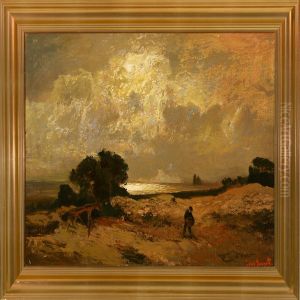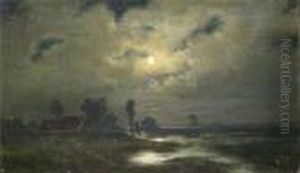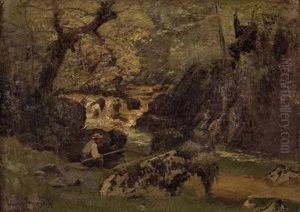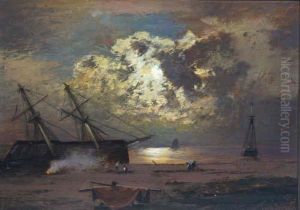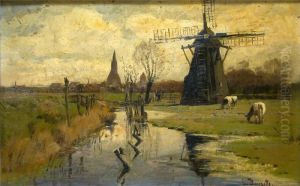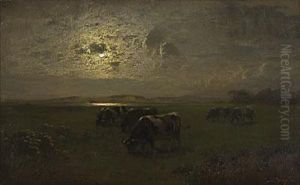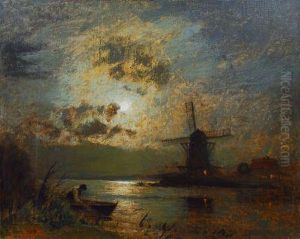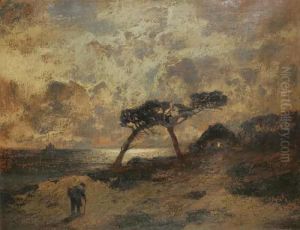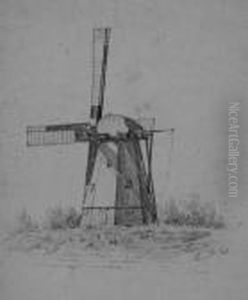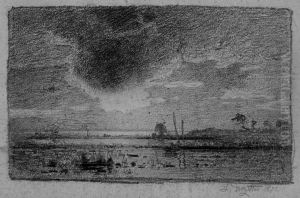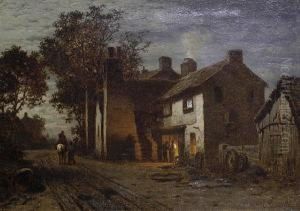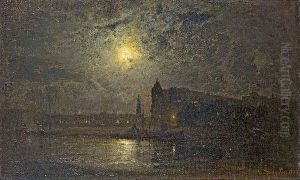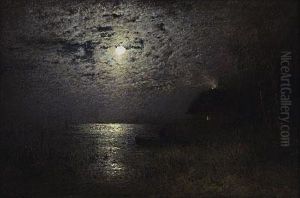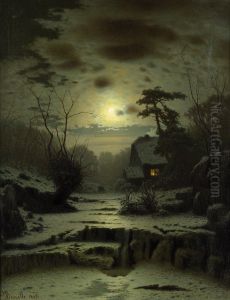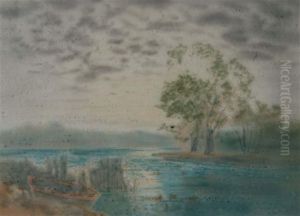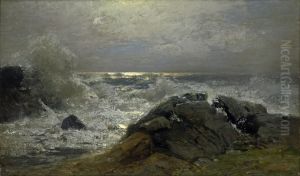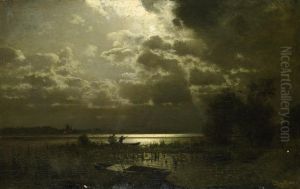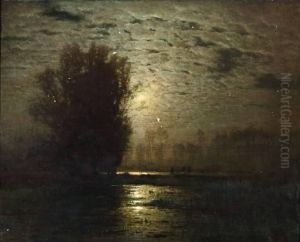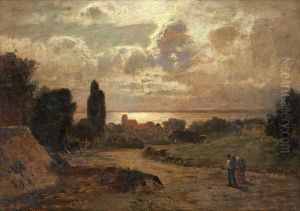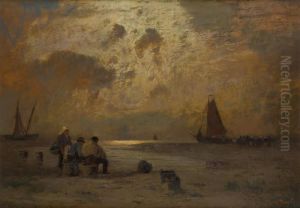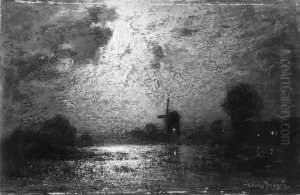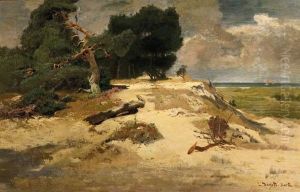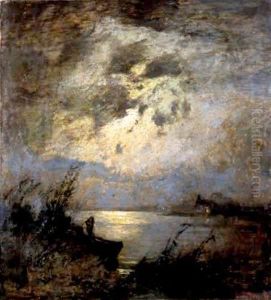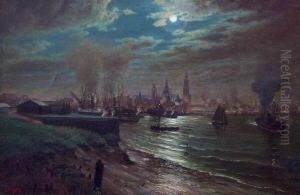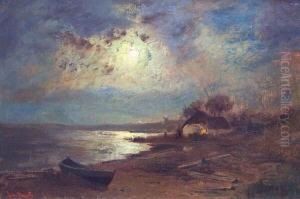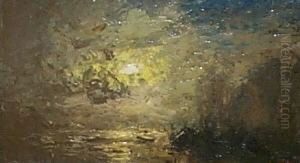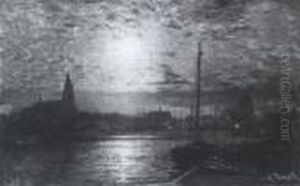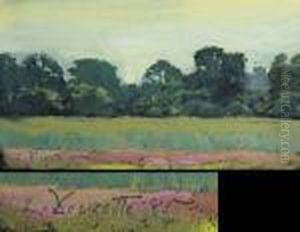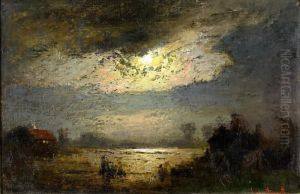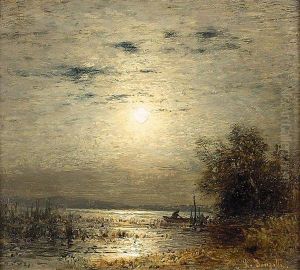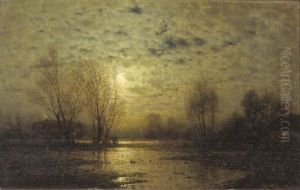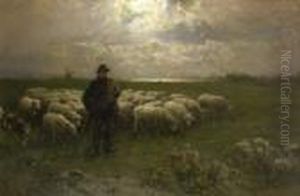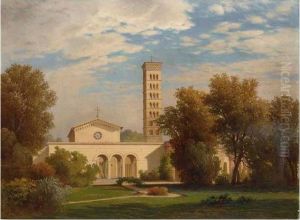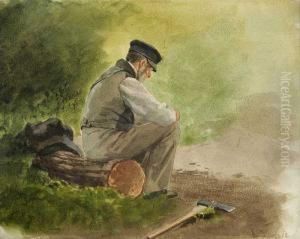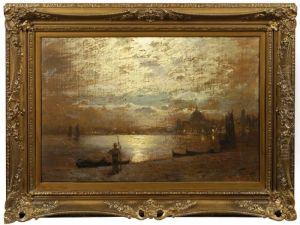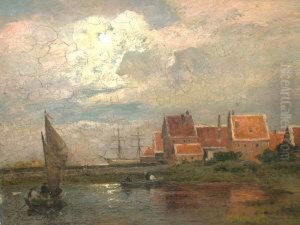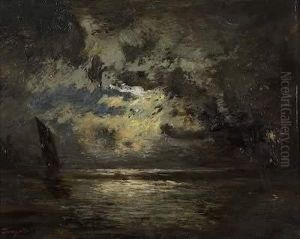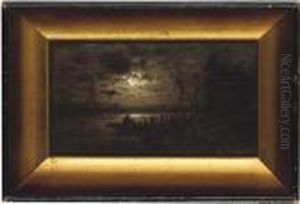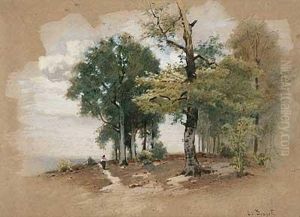Louis, Carl Ludwig Douzette Paintings
Carl Ludwig Friedrich Johann Douzette, known as Louis Douzette, was a prominent German landscape painter born on September 25, 1834, in Tribsees, Prussia (now part of Germany). He is particularly renowned for his atmospheric night scenes and was an influential figure in the late 19th-century German art scene.
Louis Douzette displayed an early talent for art and pursued his passion by studying at the Academy of Arts in Berlin. He was a student of prominent painters of the time, including Hermann Eschke, who was known for his marine and coastal landscapes. Under Eschke's guidance, Douzette honed his skills and developed a keen interest in depicting the interplay of light and shadow, which would become a defining characteristic of his work.
Throughout his career, Douzette was particularly fascinated with the mood and atmosphere of nocturnal landscapes. He became famous for his 'moonlight paintings,' where he skillfully captured the serene and often melancholic ambiance of night-time scenes. His paintings often featured silhouettes of trees, tranquil villages, and moonlit bodies of water, evoking a sense of peaceful solitude.
Douzette's work was well-received during his lifetime, and he participated in numerous exhibitions. He was part of the Berliner Secession, a group of artists who sought to break away from the traditional academic style prevalent in Germany at the time. This association with the Secession movement allowed Douzette to further develop his distinctive style and gain recognition among his contemporaries.
In addition to his moonlight paintings, Douzette also created a range of other works, including genre scenes, and was known to have painted the Prussian royal family. However, it is his unique portrayal of nightscapes that cemented his legacy in the world of art.
Louis Douzette continued to paint until his death on February 21, 1924, in Barth, Germany. His works remain a testament to his mastery of mood and atmosphere, and they continue to be appreciated by art enthusiasts and collectors alike. Douzette's paintings can be found in various museums and private collections, serving as enduring examples of 19th-century German landscape painting.
